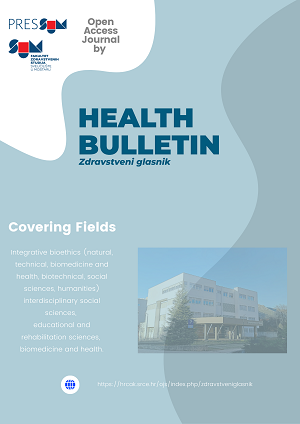THE FREQUENCY OF DUAL DIAGNOSIS AMONG THE USERS OF PSYCHOSOCIAL SERVICES IN THE THERAPEUTIC COMMUNITIES IN THE REPUBLIC OF CROATIA
Keywords:
addiction, dual diagnosis/co-occurring disorders, therapeutic communities, users of psychosocial servicesAbstract
Introduction: Addiction is a mental state or physical condition that results from the continued use of a
substance or performance of a particular activity. Dual diagnosis is the co-occurrence in the same individual
of severe mental problems and addiction disease. Objective: To test the frequency of co-occurring disorders
among the users of psychosocial services in the therapeutic communities in the Republic of Croatia. Subjects
and methods: A cross-sectional study on a sample of 648 members of therapeutic communities was carried
out. The data were collected by means of a modified international Pompidou Group’s questionnaire
consisting of general sociodemographic data and the data on treatment, risky behaviour and legal problems.
Results: More than a half of the total number of subjects had dual diagnosis. The most frequent diagnoses
co-occurring with addiction were disorders of adult personality and behaviour and schizophrenia,
schizophrenia-like disorders and delusional disorders. Co-occurring disorders were more frequent in women
than in men. In the Pope John XXIII Community, the main addiction substance among people of young age
was amphetamine, and this change in trends of psychoactive substance abuse should be additionally
explored. Conclusion: Somewhat more than a half of users of psychosocial services in the therapeutic
communities in the Republic of Croatia had dual diagnosis.















